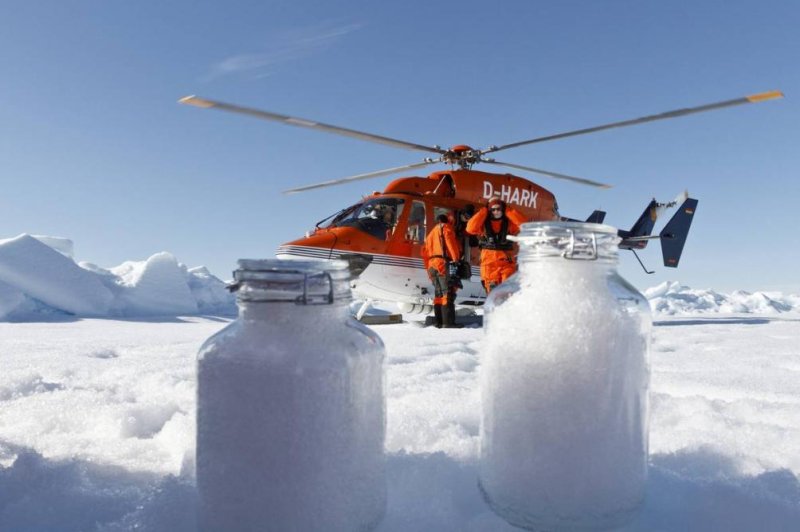Scientists found surprisingly large concentrations of microplastics in snow samples collected in the Arctic. Photo by Kajetan Deja/Alfred Wegener Institute
Aug. 16 (UPI) -- Scientists have found surprisingly large amounts of microplastics in snow and sea ice samples collected in the Arctic and Alps. The research offers another reminder that tiny bits of plastic pollution can be transported long distances.
Scientists estimate that snow washes microplastics out of the atmosphere, carrying them back to Earth's surface where they can accumulate in places like the Arctic. Researchers found microplastic concentrations as high as 14,400 particles per liter in Arctic snow samples. In one snow sample collected by the side of a rural road in the Bavarian Alps, researchers measured 154,000 particles per liter.
The samples collected by scientists with the Alfred Wegener Institute and the Swiss WSL Institute for Snow and Avalanche Research SLF featured higher microplastic concentrations than those measured during similar surveys.
"First of all, snow is extremely efficient when it comes to washing microplastic out of the atmosphere," AWI researcher Gunnar Gerdts said in a news release. "Secondly, it could be due to the infrared spectroscopy we used, which allowed us to detect even the smallest particles -- down to a size of only 11 micrometers."
While other microplastics surveys count particles by hand beneath a microscope, the latest study used an infrared microscope to analyze the plastic particles in the melted snow and ice samples.
Scientists found microplastics in sea ice and in snow on remote ice floes, as well as on the island of Svalbard. The research, published this week in the journal Science Advances, suggests snow is carrying microplastics to the remote corners of the Arctic and to the peaks of major mountain ranges.
"This additional transport route could also explain the high amounts of microplastic that we've found in the Arctic sea ice and the deep sea in previous studies," said AWI scientist Melanie Bergmann.
Increasing amounts of research have focused on measuring the prevalence of microplastics in the digestive tracts of marine species, but the latest research suggests large amounts of microplastics are moving through the atmosphere. The revelation raises the important question: how much microplastics are humans inhaling?















